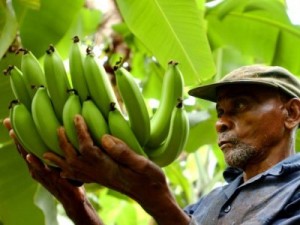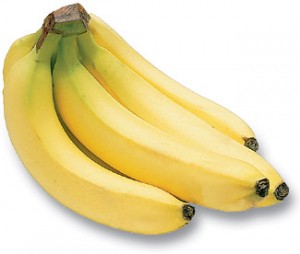News media around the world lauded the Armistice in the six-year ‘Banana Wars’ that was signed on 11 April 2005 by the United States and the European Union. But much of the reporting about this event glossed over the complex geo-political and economic relationships that fueled this conflict and ignored lingering issues that are bound to cause internal strife for a number of the more marginal warring parties.
[Peeling the skin off the banana wars…, TIJ, April 19, 2005]
This is how I opened a commentary almost five years ago on the origins of the global war over bananas that reportedly ended this week with the signing of a deal between the US and its Latin American agents and the EU and its African, Caribbean and Pacific (APC) dependencies – namely, former British and French colonies.
 I referred to the deal these warring parties signed in 2005 as a mere “Armistice” because I knew full well that its failure to address the economic concerns of the poor APC countries affected guaranteed that it would only lead to a temporary cessation, not an end, to hostilities.
I referred to the deal these warring parties signed in 2005 as a mere “Armistice” because I knew full well that its failure to address the economic concerns of the poor APC countries affected guaranteed that it would only lead to a temporary cessation, not an end, to hostilities.
Incidentally, the developed countries now trying to manufacture a climate change treaty in Copenhagen would do well to be instructed by this precedent. After all, no treaty (or “political agreement”) they sign will have any binding effect or substantive impact unless it properly addresses the economic concerns of developing countries – by, amongst other things, requiring rich countries to provide $200 billion annually in development aid to help poor countries cope with the demands for combating climate change.
I digress; but this explains, in part, why I am so hopeful that this latest deal will finally end the decades-long trade war over bananas.
For it appropriately slashes longstanding EU tariffs on imports of bananas from Latin American countries (like Ecuador and Guatemala) that were imposed just to give preference to virtually tariff-free imports from APC countries (like Cameroon and Dominica). More to the point, it provides hundreds of millions in development aid from the EU to help its former colonies not only cope with the terminal loss of market share but also diversify their economies to make them more sustainable.
 Ironically, this deal also means less expensive but even “bigger” bananas for the EU – the world’s biggest importer of bananas, as well as more profits for the US – specifically for its multinational companies (like Chiquita and Dole) that are the main producers of bananas exported from Latin America.
Ironically, this deal also means less expensive but even “bigger” bananas for the EU – the world’s biggest importer of bananas, as well as more profits for the US – specifically for its multinational companies (like Chiquita and Dole) that are the main producers of bananas exported from Latin America.
That said, it might be helpful to know that the US and its Latin American agents launched the first salvo in this war by filing a complaint at the World Trade Organisation (WTO) in 1993, alleging that the preference the EU accorded its APC dependencies violated international trade rules.
This led to a WTO ruling against the EU in 1999. But the EU’s imperial failure to reduce its tariffs consistent with this ruling compelled the US to request a review. This in turn led to a reaffirmation in July 2008 of that WTO ruling, which read, in part, as follows:
The current EU banana regime contains measurers inconsistent with various provisions of the GATT [General Agreement on Tariffs and Trade] and has nullified or impaired benefits accruing to the United States under that Agreement.
The deal signed on Tuesday now gives binding and substantive force to this ruling – thus ending this very lengthy fruit fight. Here’s how European Trade Commissioner Benita Ferrero-Waldner reflected on this resolution:
I’m very happy to see the longest-running trade dispute finally solved. History is being made today because this dispute has soured global trade relations for too long.
So go bananas and have a banana split to celebrate!
Related commentaries:
Peeling the skin off the banana wars
Leave a Reply
You must be logged in to post a comment.